The Deep Toll of Tar Sands On Canada’s Indigenous People
FORT MCMURRAY, Canada — The first mine opened when Jean L’Hommecourt was a young girl, an open pit where an oil company had begun digging in the sandy soil for a black, viscous form of crude called bitumen.
She and her family would pass the mine in their boat when they traveled up the Athabasca River, and the fumes from its processing plant would sting their eyes and burn their throats, despite the wet cloths their mother would drape over the children’s faces.
By the time L’Hommecourt was in her 30s, oil companies had leased most of the land where she and her mother went to gather berries from the forest on long summer days or hunt moose when the leaves turned yellow and the air crisp.
Today, that same land, near her Indigenous community of Fort McKay, is surrounded by mines that have swallowed an area larger than New York City, stripping away boreal forest and muskeg and rerouting waterways.
Oil and gas companies like ExxonMobil and the Canadian giant Suncor have transformed Alberta’s tar sands — also called oil sands — into one of the world’s largest industrial developments. They have built sprawling waste ponds that leach heavy metals into groundwater, and processing plants that spew nitrogen and sulfur oxides into the air, sending a sour stench for miles.
THE FIFTH CRIME: ECOCIDE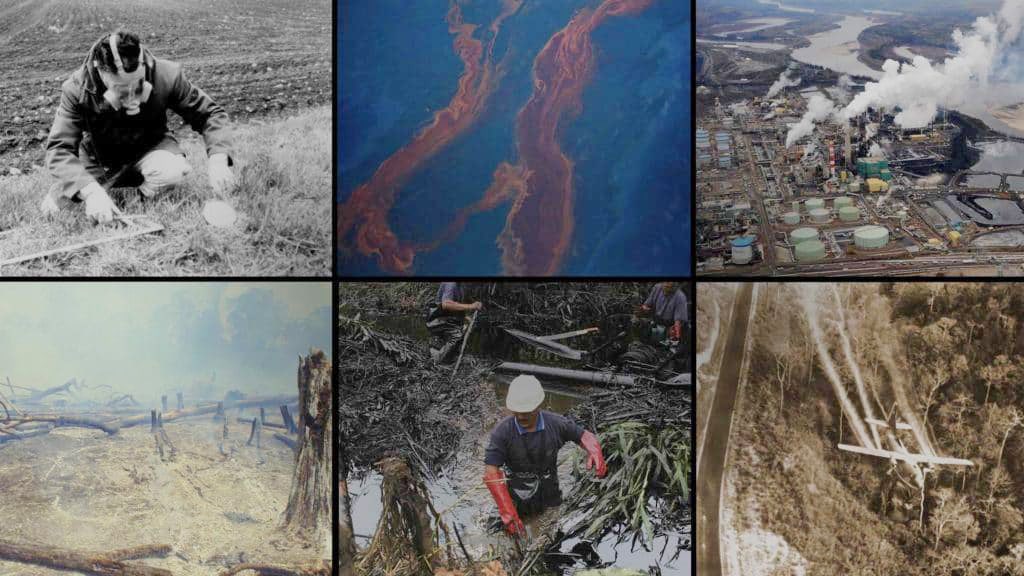 An ongoing series, produced in collaboration with Inside Climate News and NBC, about the campaign to make “ecocide” an international crime. See all stories in the series here. |
The sands pump out more than 3 million barrels of oil per day, helping make Canada the world’s fourth-largest oil producer and the top exporter of crude to the United States. Their economic benefits are significant: Oil is the nation’s top export, and the mining and energy sector as a whole accounts for nearly a quarter of Alberta’s provincial economy. But the companies’ energy-hungry extraction has also made the oil and gas sector Canada’s largest source of greenhouse gas emissions. And despite the extreme environmental costs, and the growing need for countries to shift away from fossil fuels, the mines continue to expand, digging up nearly 500 Olympic swimming pools-worth of earth every day.
COP26, the global climate conference in Glasgow earlier this month, highlighted the persistent gap between what countries say they will do to cut emissions and what is actually needed to avoid dangerous warming.
Scientists say oil production must begin falling immediately. Canada’s tar sands are among the most climate-polluting sources of oil, and so are an obvious place to begin winding down. The largest oil sands companies have pledged to reduce their emissions, saying they will rely largely on government-subsidized carbon capture projects.
Yet oil companies and the government expect output will climb well into the 2030s. Even a new proposal by Prime Minister Justin Trudeau to cap emissions in the oil sector does not include any plan to lower production.
Some lawyers and advocates have pointed to the tar sands as a prime example of the widespread environmental destruction they call “ecocide.” They are pushing for the International Criminal Court to outlaw ecocide as a crime, on a par with genocide or war crimes. While the campaign for a new international law is likely to last years, with no assurance it will succeed, it has drawn attention to the inability of countries’ existing laws to contain industrial development like the tar sands, which will pollute the land for decades or centuries.
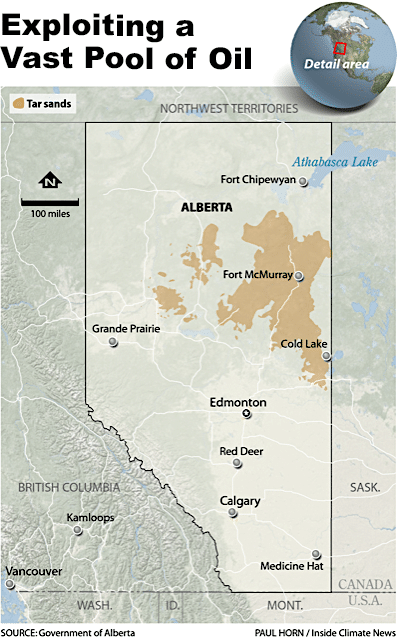
Alberta’s tar sands holds the world’s third largest oil reserves. But they are also among the most polluting sources of oil, and their extraction consumes vast quantities of energy and water.
Julie King, an Exxon spokeswoman, said that “ExxonMobil is committed to operating our businesses in a responsible and sustainable manner, working to minimize environmental impacts and supporting the communities where we live and work.”
Leithan Slade, a spokesman for Suncor, pointed to agreements the company has signed with First Nations, adding that “Suncor sees partnering with Indigenous communities as foundational to successful energy development.”
Despite those agreements, the mines’ ecological impacts are so vast and so deep that L’Hommecourt and other Indigenous people here say the industry has challenged their very existence, even as it has provided jobs and revenue to Native businesses and communities.
“The basis of all our Indigenous culture is on the land,” said L’Hommecourt, 58.
It was the threat to her mother’s traditional land that 20 years ago set her on a path of resistance. She attended a hearing for a mine that was slated to consume much of that land, and she spoke out angrily about the development. She ended up being recruited to work as an environmental coordinator for the Fort McKay First Nation, the Indigenous group of which she is a member, to help protect whatever shreds of land she could.
“That’s when I made my choice,” she said. “I’m going to fight for my mom’s land.”
The only way to fully appreciate the scope of the tar sands is to see the mines from the air. Flying across the region from the north, the twisting channels of the Peace-Athabasca Delta, one of the world’s largest inland deltas, dominate the landscape, snaking through forest and marshlands with not a road or power line in sight.
That terrain gives way to a mixture of forest, muskeg, and drylands, where the sandy soil rises to the surface. Out of nowhere, straight lines emerge — a wide, unpaved highway and paths leading to squares carved out of the forest, where companies have explored for oil.
Then the mines come into view. Billowing plumes of smoke fill the sky. Flames shoot out of flare stacks. The forest’s green is replaced by vast black holes pockmarked with giant puddles. From the air, the dump trucks and shovels look like toys, lines of Tonkas digging in oversized sandboxes. The mines are terraced, with massive berms holding back lagoons full of waste above the newly dug pits. As the plane nears its descent, the cabin fills with a tarry stench.
“It’s just the most completely ludicrous approach to industrial and energy development that is possible, given everything we know about the impact on ecosystems, the impact on climate,” said Dale Marshall, national program manager with Environmental Defence, a Canadian advocacy group.
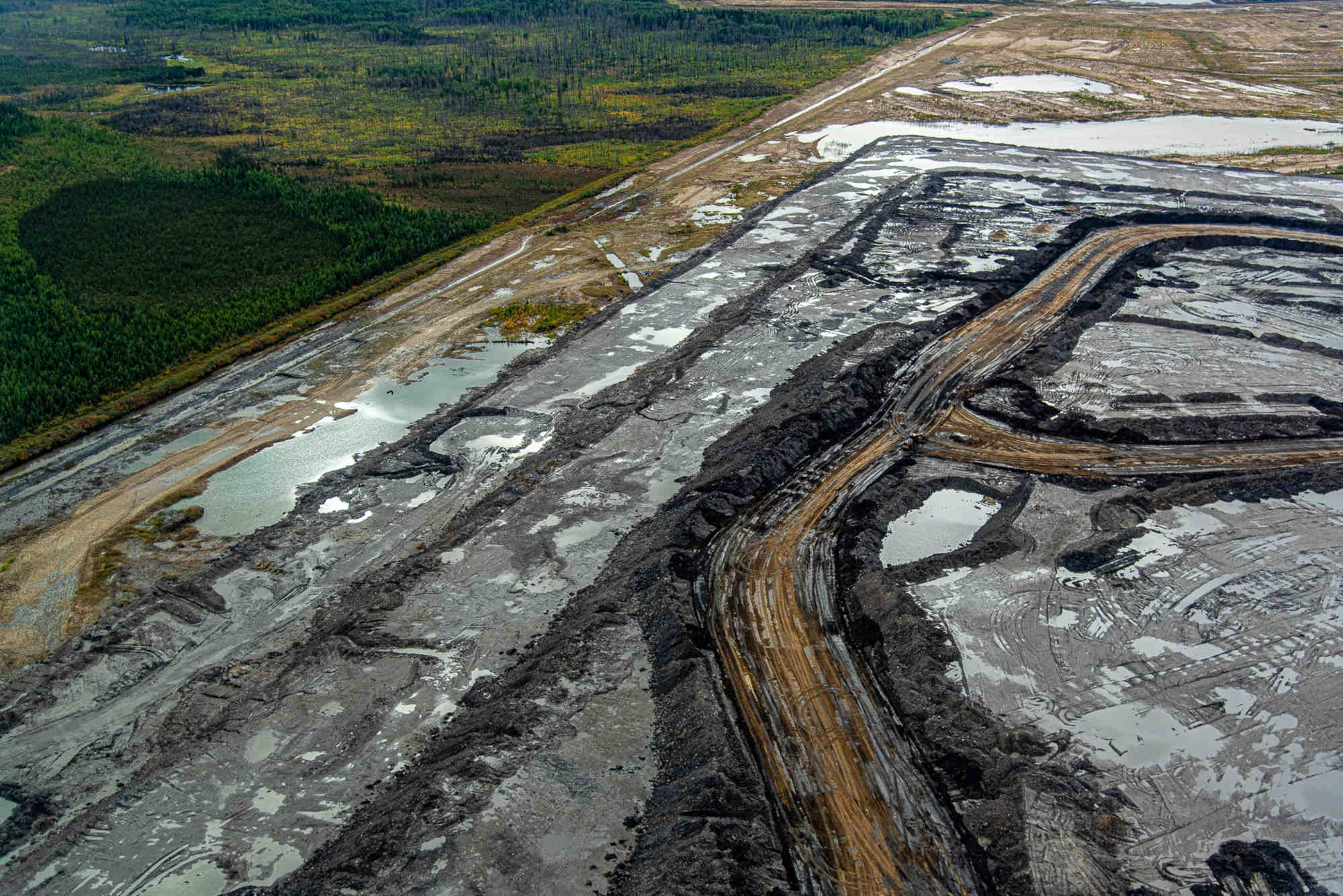
To extract bitumen from the sand, oil companies heat it and then treat it in a slurry of water and solvents. In other parts of Alberta, where the sands are too deep to mine, the bitumen is melted in place and extracted through wells by pumping high-pressure steam underground. These deeper deposits cover a much larger area than the mines, more than 50,000 square miles.
The extraction requires enormous amounts of energy: In 2018, the latest year for which figures are available, oil sands producers consumed 30 percent of all the natural gas burned in Canada. Collectively, the mines and deep-extraction projects emit greenhouse gas emissions roughly equal those of 21 coal-fired power plants, and that’s just to get the crude out of the ground.
The operations also pump out noxious air pollutants, including nitrogen oxides, sulfur oxides, and polycyclic aromatic hydrocarbons, traces of which have been detected by scientists in soils and snowpack dozens of miles away.
The mines guzzle vast quantities of water, with nearly 58 billion gallons drawn from the region’s rivers, lakes, and aquifers in 2019, according to government figures. When all that water comes out the other end, it is so heavily laced with hydrocarbons, naphthenic acids, and carcinogenic heavy metals that it cannot be released where it came from. Instead, oil companies have been collecting these acutely toxic “tailings” in waste ponds, some of which routinely leak their contents into groundwater.
In 1973, a report to the Alberta Department of the Environment identified waste as a problem and recommended placing limits on the ponds’ size and duration of use. The idea was that the toxic components would settle out of the water over a matter of years. The reality is that the tailings will take decades or even centuries to separate naturally.
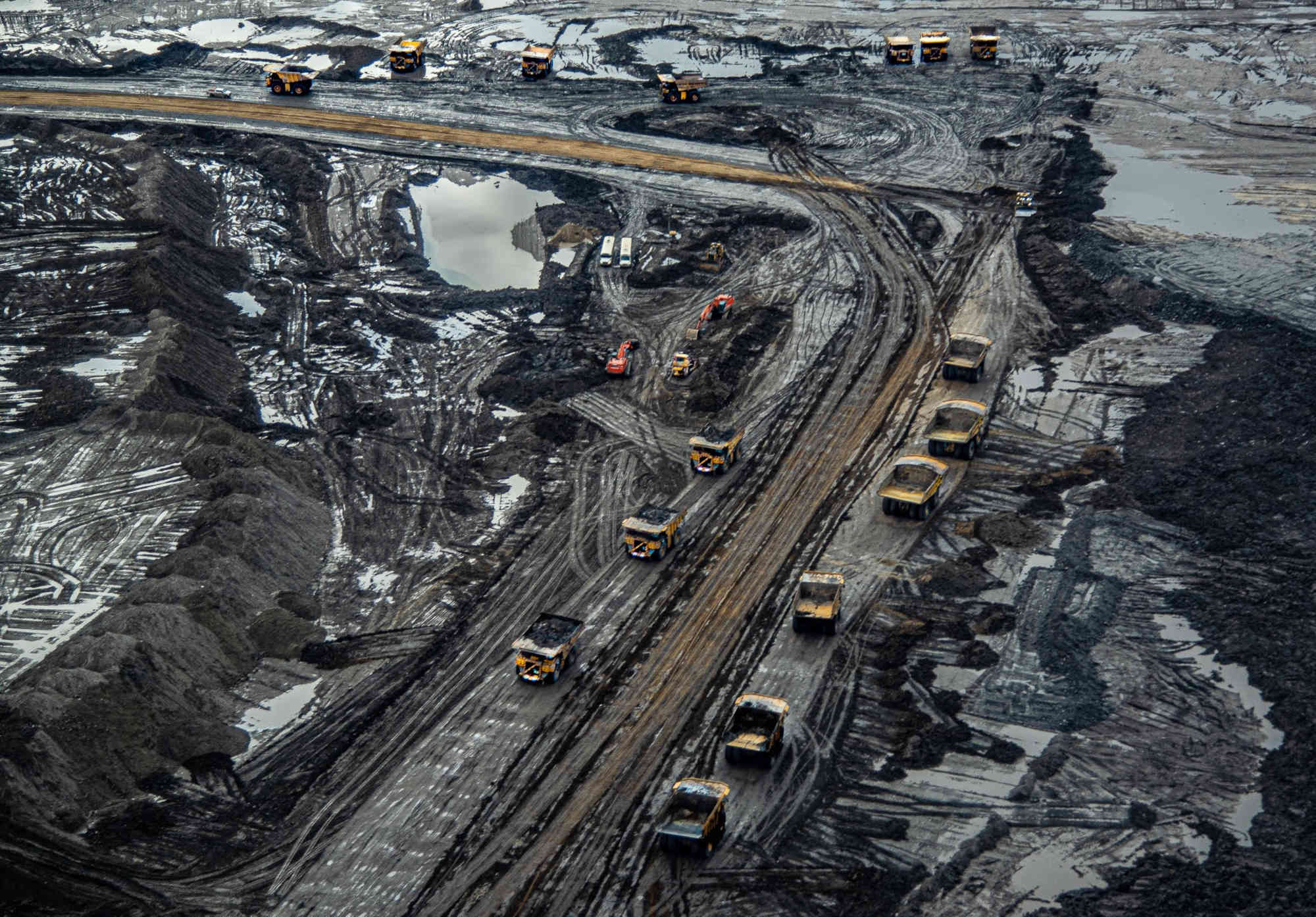
As a result, the ponds have grown exponentially in size and now cover more than 100 square miles. Every day, they swell with millions of gallons of new toxic waste. Regulatory filings show that the ponds are expected to continue to expand well into the 2030s. While companies are required by law to eventually reclaim them, only a fraction have been reclaimed so far.
Next to one pond, a coal-black mountain of debris towers over the water. High voltage lines buzz overhead. Air cannons ring the pond and blast several times each minute, creating a constant explosive din. Industrial iron scarecrows are dressed with safety vests and helmets. The noise and display are meant to scare off the millions of migratory birds that arrive in northern Alberta each year, exhausted from their annual odysseys.
Sometimes even these defenses fail or the birds ignore them and land anyway — tens of thousands each year, according to a 2016 report to provincial regulators, obtained this year by The Narwhal, a nonprofit Canadian news organization.
Ottilie Coldbeck, a spokeswoman for the Alberta Energy Regulator, which oversees the industry, said the research in the report “was not considered complete.”
Some conservationists worry that endangered whooping cranes, which migrate here annually, might land in a pond, and since fewer than 900 remain, the landing of a single flock could decimate the species in one errant swoop.
White explorers and traders set their sights on the tar sands as soon as they arrived. In 1789, Sir Alexander Mackenzie reported seeing veins of “bituminous quality” exposed along the Athabasca River. Within a century, prospectors and geologists had identified “almost inexhaustible supplies” of petroleum in the area. The only obstacle seemed to be the people living above it.
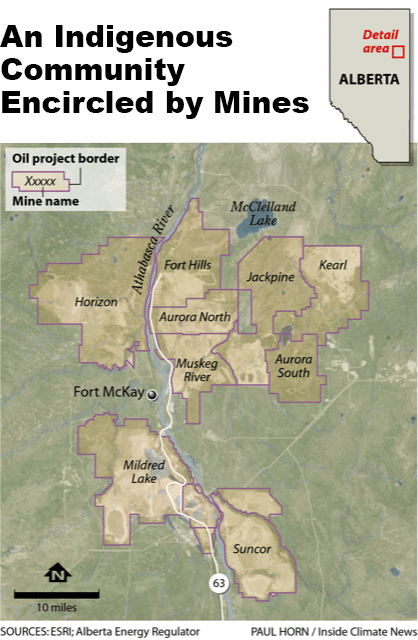
Tar sands mines have swallowed an area larger than New York City, and the Indigenous community of Fort McKay is in the middle of them. Even if no new mines are approved, the existing operations, shown below, of Suncor, Syncrude, Imperial Oil, and Canadian Natural Resources could continue to expand within their leases for decades.
In 1891, the superintendent general of Indian Affairs recommended drafting a treaty, “with a view to the extinguishment of the Indians’ title,” to open access to petroleum and other minerals. When a team was sent up the Athabasca eight years later to sign what would become Treaty 8, a member of the party named Charles Mair described giant escarpments rising on either side, “everywhere streaked with oozing tar, and smelling like an old ship.”
The Indigenous people used the substance to seal canoes and even burned it like coal, but Mair saw something different. “That this region is stored with a substance of great economic value is beyond all doubt,” he wrote. “When the hour of development comes, it will, I believe, prove to be one of the wonders of Northern Canada.”
But it would be many years before that hour struck, and the tar sands remained largely beyond reach until Americans, driven by nationalistic ambitions, invested vast sums of capital. In 1967, J. Howard Pew, of the Sun Oil Company, opened the first commercial mine, declaring, “No nation can long be secure in this atomic age unless it be amply supplied with petroleum.” A decade later, a second mine opened, called Syncrude, backed by a consortium of American oil companies and the Canadian government.
For years, there were only two mines, but the 21st century brought an insatiable global appetite for oil and fears that conventional sources of crude were running out. Oil prices surged, and Alberta’s massive pool of bitumen offered an opportunity to oil companies: No risky exploration was required, and unlike in other parts of the globe, Canada provided a stable, business-friendly government. Multinational giants poured in cash, boosted their reserves and drew tens of billions of dollars in new investment.
Over the course of only a decade the mines began to multiply. Eight active tar sands mines now form a 40-mile chain along the Athabasca River, their giant shovels gobbling up the earth like an invasion of mechanical caterpillars.
The town of Fort McKay, population 765, sits in the middle of all this. Even as the mines devoured the land, most of the people who lived here hung on as well as they could, squeezed into smaller and smaller spaces.
L’Hommecourt keeps a cabin 20 miles outside of Fort McKay as the crow flies, but more than an hour’s drive, because the road has to loop between and around several mines and two deeper extraction projects.
Despite L’Hommecourt’s best efforts as an environmental coordinator, the mines have continued to encroach on her cabin, which sits on the land where she used to go with her mother. More and more workers have showed up in the area, stopping her along the road to tell her that she couldn’t hunt moose or that she was trespassing.
“‘You’re the trespasser,’” she tells them. “‘I shouldn’t have to be answering your questions, you answer mine. That’s my attitude.”
The land, she said, is where she can think in her language, Dene, “where in the outside world it’s all English.”
“You get that sense of belonging here,” she said, “and that’s what I want for our peoples, to have their land back.” She added, “If you have your land back, you have everything.”
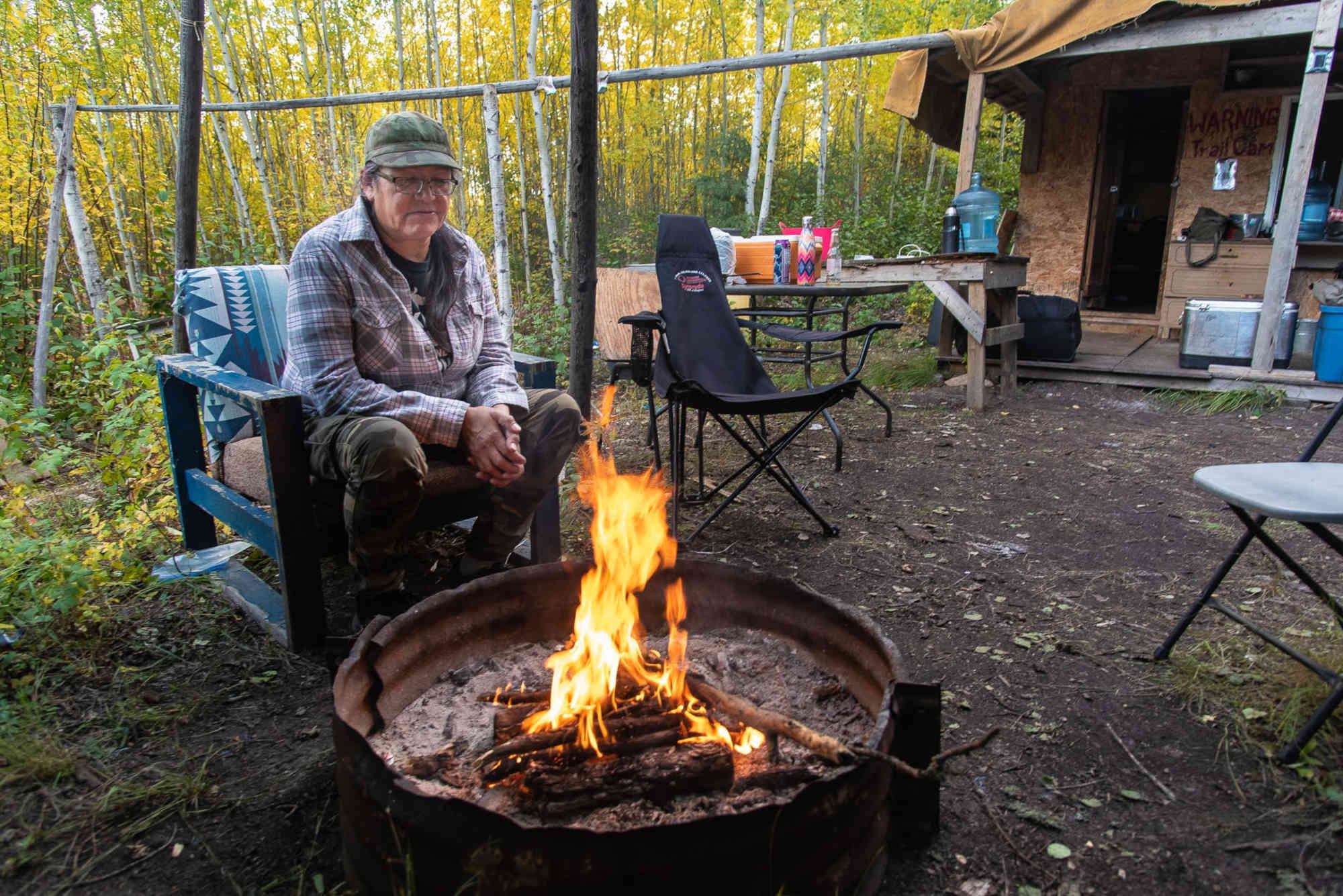
When Pew’s Great Canadian Oil Sands mine opened in 1967, the people of Fort McKay were not happy, said Jim Boucher, who led the First Nation as chief for three decades until 2019.
Sun Oil, now Suncor, took over an important summer hunting and gathering ground called Tar Island, he said. “There was no discussion, no consultation.”
The Fort McKay First Nation includes both Dene and Cree — the two main Indigenous groups that have lived in the region for centuries. For most of the 20th century, the fur trade provided the nation’s members with one of their few sources of income. But it collapsed just as the oil industry was taking hold, and they had few alternatives but to turn to the oil companies and their rapidly expanding mines.
“We had no choice,” Boucher said.
After becoming chief in 1986, Boucher formed the Fort McKay Group of Companies to work with the oil industry, and over the following decades he oversaw partnerships with energy companies that would eventually net hundreds of millions of dollars for the community.
Now the oil sands are the axis around which Fort McKay revolves. The industry has allowed the community to build subsidized housing and to pay for education and elder care, achievements that Boucher rattles off proudly. Enrolled members receive quarterly dividends, and some, including Boucher, have grown relatively wealthy.
Many First Nations have also fought development. Several have filed lawsuits against companies or regulators — The Beaver Lake Cree Nation, south of Fort McMurray, sued the federal and provincial governments in 2008, saying its treaty rights had been violated by the cumulative effects of development. Despite receiving a favorable ruling five years later, the case is still awaiting trial, with a court date scheduled for 2024.
Attempting to block development can be prohibitively expensive, though, and is usually unsuccessful.
“It’s David and Goliath here, we’re dealing with multi-billion dollar companies,” said Melody Lepine, director of government and industry relations for the Mikisew Cree First Nation. The regulatory process, she said, is built to approve the companies’ projects, even if it takes years. “It’s very, very difficult to get anybody to say, ‘No, you’re not going to get approved.’”
Each of the area’s First Nations has signed “impact benefit agreements” with the oil companies that can include limits on certain practices, like water withdrawals, quotas for hiring Indigenous people and direct payments to the nations. But even as the impact agreements have secured benefits for the First Nations, they’ve created a Devil’s bargain, deepening reliance on an industry that is consuming the land that was once the base of the Indigenous economy and culture. The British sociologists Martin Crook, Damien Short and Nigel South have argued that the concept of “ecocide” offers a “powerful tool” to recognize the particular damage caused by resource extraction to many Indigenous groups, because of their cultural, spiritual, and subsistence ties to ecosystems.
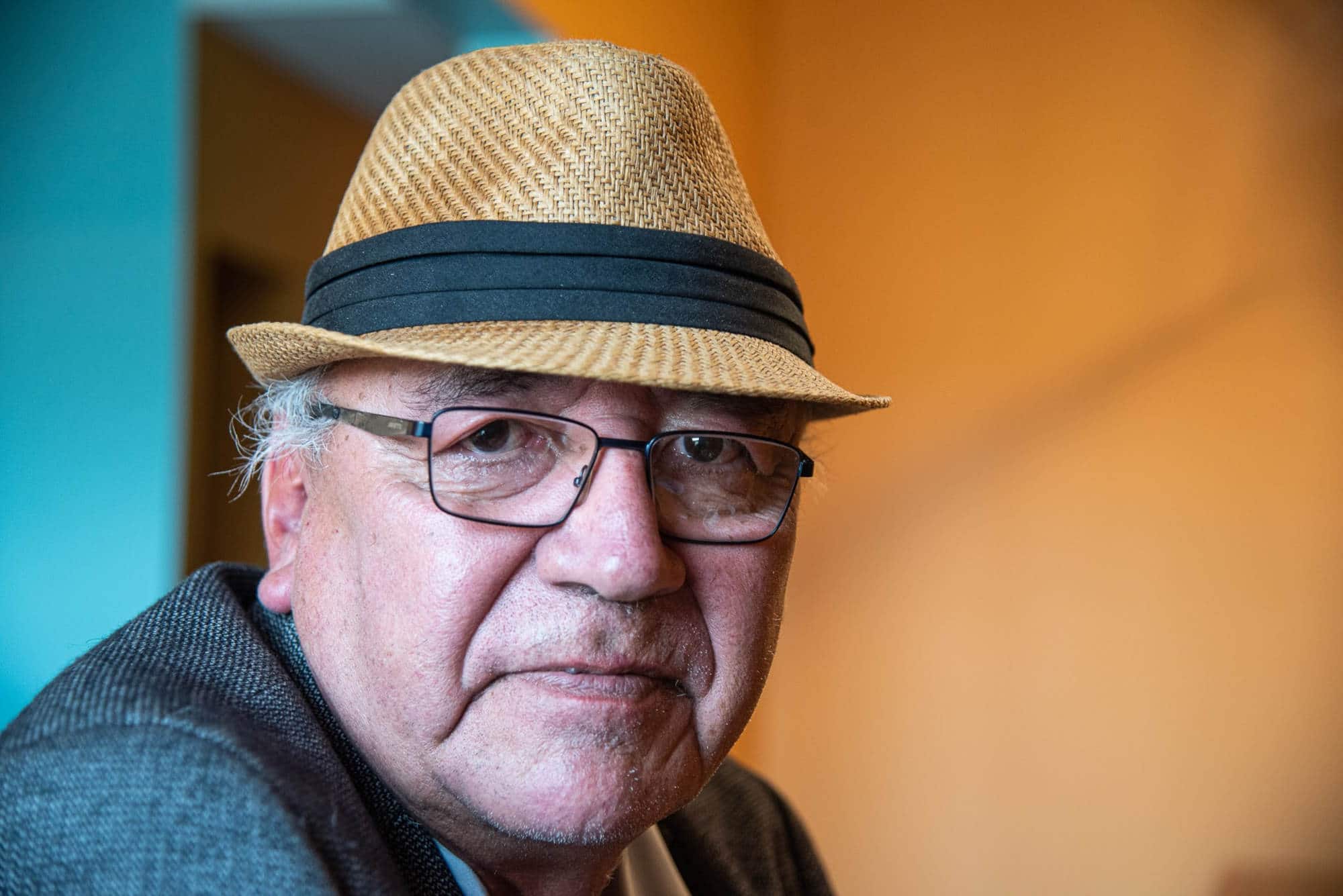
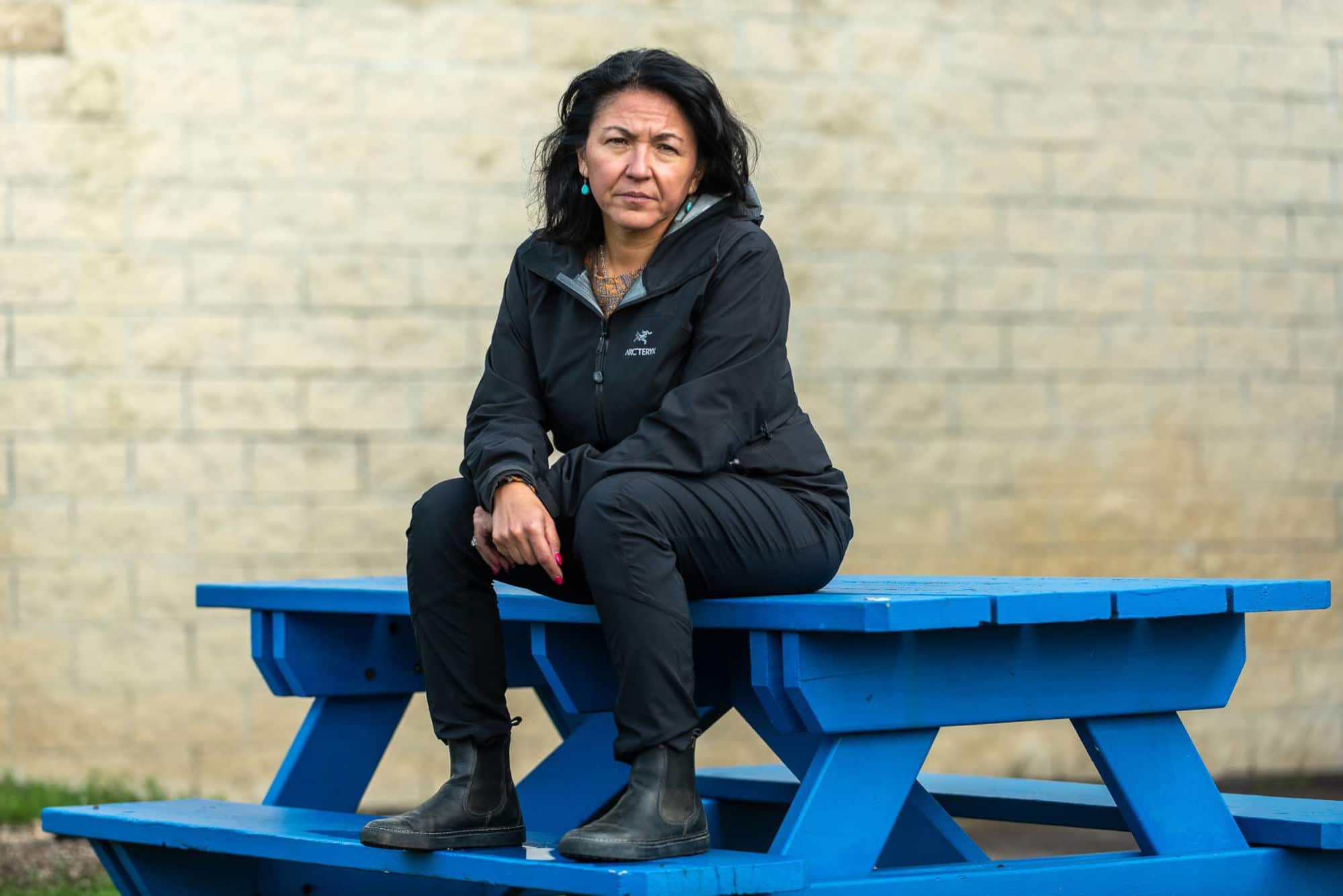
“They’re making us dependent on things that they make, things that they build,” L’Hommecourt said. “They want us to be dependent on those things so that we can give them our money, so we can give them our land and say, ‘Yeah, okay. I’ll trade it off.’”
L’Hommecourt, who is Boucher’s cousin, said she holds no resentment toward the former chief for tying their people’s fate to the industry.
“He did what he had to do, and as a chief I commend him,” L’Hommecourt said. “They call us the richest little First Nation in Canada.”
Boucher lost his grandfather’s cabin, where he learned to hunt and trap as a boy, to Syncrude’s mine. A cabin Boucher later built for his father, to the north, now sits on a postage stamp of land, he said, surrounded by newer mines.
“It’s empty, that’s how the cabin is to me,” Boucher said. “So I don’t go there anymore. No joy.”
The mines cover a staggeringly large area, but their impact on the environment reaches even farther.
The town of Fort Chipewyan sits where the Peace and Athabasca rivers empty into Lake Athabasca, about 90 miles north of the closest mine, and the land here seems to offer a glimpse of what existed before the oil and gas companies arrived. There are no roads to the community, except for a frozen winter road that has become harder to maintain as temperatures warm. The mostly Indigenous residents can still hunt and trap in unbroken stretches of boreal forest, where wolves and wolverines prowl and towering spruce and jack pines shade a thick, spongy mat of lichen and moss below. The town abuts Canada’s largest national park, a UNESCO World Heritage Site that is home to herds of wood bison and which the World Heritage Committee said in June was threatened by the expansion of the tar sands.
But while the nights are quiet and the air smells clean, the industry’s presence is strong even here. Kids zoom around town on ATVs, while the local supermarket displays boxes of 87” flatscreen TVs — “toys,” as some residents call them, that only those who work in the industry can afford to buy.
And despite its distance from the development, the flesh of the animals that drink from the lake is laced with some of the same compounds and heavy metals that collect in the waste ponds upstream.
When Alice Rigney, an elder with the Athabasca Chipewyan First Nation, was a young girl, the waste ponds had not yet been dug. Her family would head to their homestead in the delta ahead of the freeze and stay until Christmas. When the delta flooded in the spring, she said, the men would trap muskrats and the women would keep a fire going to dry the pelts and smoke the meat. Then came the spring bird hunt, flocks of thousands coming from the south.
But in the late 1960s, the lake levels dropped and the delta no longer flooded. A dam began to fill its reservoir up the Peace River, and the tar sands development began up the Athabasca. One day, she and her brother took a snowmobile out on the ice to go fishing for walleye, and then cooked their catch over an open fire, as always. But as the fish began to cook, black grease dripped out.
“The taste was gas or fuel,” Rigney said. They later learned that there had been an oil spill under the ice upstream, and the fishery had to be shut temporarily, she said.
People here have long suspected that the tar sands mines were poisoning the land and everything it feeds. Everyone seems to know someone who has died of cancer or another disease — Rigney survived breast cancer, which ran in her family, and her husband survived colon cancer. But in 2004, the appearance of a rare cancer brought increased attention.
Rigney was working as a physical therapist’s assistant at the health clinic one day when a doctor approached her for help arranging travel, saying a jaundiced patient needed to be flown to Fort McMurray for treatment. The man’s illness was soon diagnosed as an aggressive type of bile duct cancer called cholangiocarcinoma. He died shortly after.
Other people began to develop the cancer, of which only a few dozen cases are diagnosed each year in Canada. In 2010, a paper published in the Proceedings of the National Academy of Sciences found elevated levels of numerous “priority pollutants,” including mercury, lead, nickel, and other heavy metals, in the river downstream of oil sands development, as well as in Lake Athabasca and in snow samples.
Three years later, another study in the same journal examined lake sediments surrounding Fort McMurray and found that levels of polycyclic aromatic hydrocarbons, a group of chemicals that includes cancer-causing compounds, started rising in the 1960s and 1970s, when oil sands development began. The researchers found elevated levels in a lake dozens of miles from the mines.
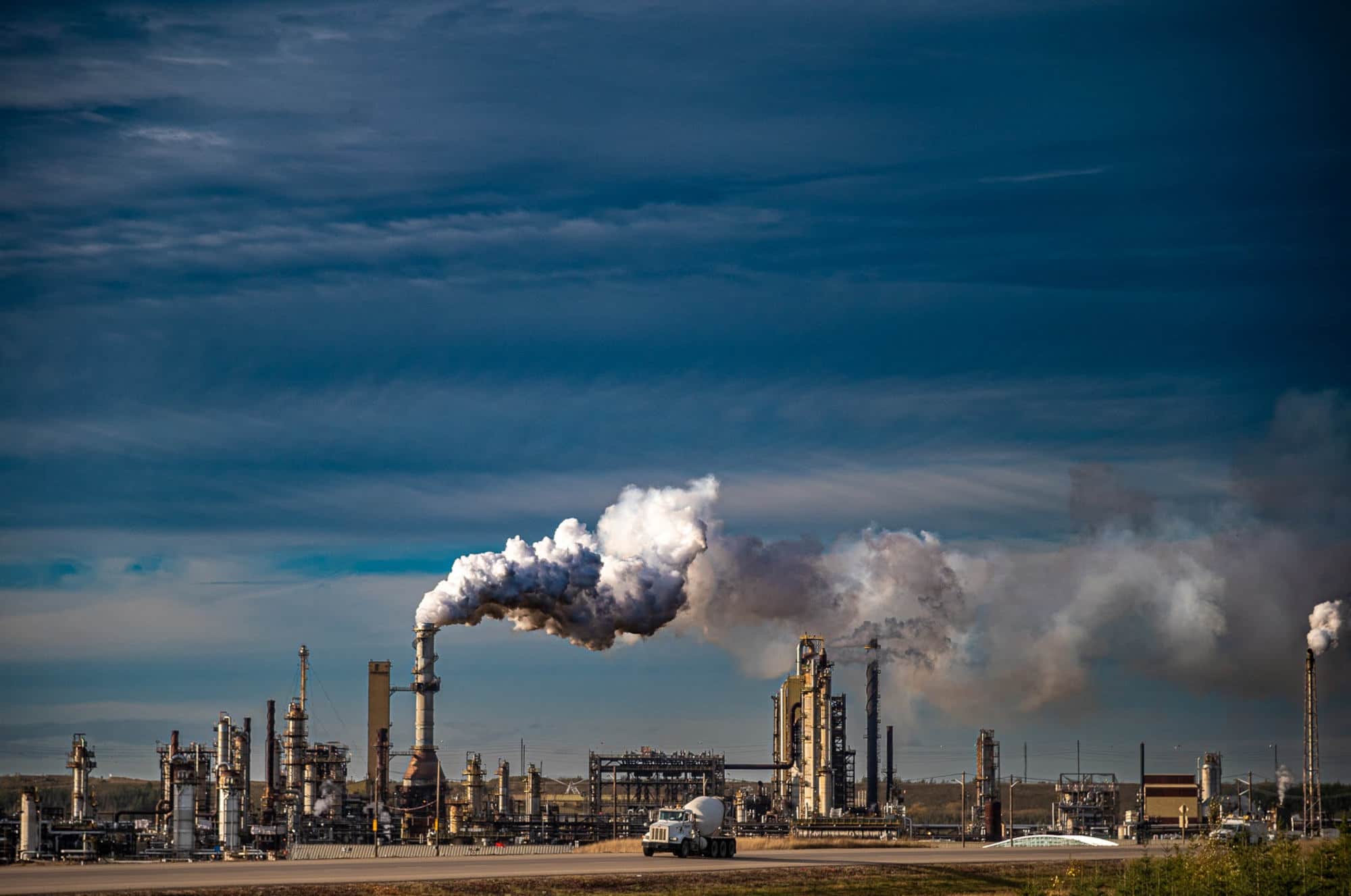
The Athabasca Chipewyan and Mikisew Cree First Nations commissioned Stéphane McLachlan, an environmental scientist at the University of Manitoba, to test the tissues of animals, and in 2014 he released a report, finding elevated levels of toxic pollutants — including arsenic, mercury, and polycyclic aromatic hydrocarbons — in the flesh of moose, ducks, and muskrats in the region. For the most part, the study found, community members were not exposed to levels high enough to affect their health, but that was only because many people had stopped eating as much wild game as they had before, out of fear that it was contaminated.
Although the study could not demonstrate that the cancers were caused by pollution from the mines, the researchers found that cancer rates in the community were correlated with working in the mines and with consuming larger quantities of traditional foods, particularly fish.
Provincial officials acknowledge that the mines’ waste ponds leak into groundwater. To “limit the risk” that this seepage will spread farther, the Alberta Energy Regulator requires companies to install drains, wells, sumps, and underground walls to capture and contain the contamination, said Coldbeck, the agency spokeswoman.
Both federal and provincial officials have disputed research that has linked groundwater contamination to the waste ponds, citing other studies that indicate the compounds may be naturally occurring in groundwater because they are contained in bitumen.
But last year, the Commission for Environmental Cooperation, an environmental body created alongside the North American Free Trade Agreement, assessed all the published studies of water contamination and concluded that there was “scientifically valid evidence” that the waste ponds were leaching contaminants into groundwater. The analysis noted that some research has concluded that the contamination reached the Athabasca River, but that scientists were still debating the findings.
Asked about the report, Coldbeck said her agency “does not have any evidence to suggest” that contaminated groundwater has reached the Athabasca River. In response to a question about health concerns, she said that the agency “is committed to ensuring that Alberta’s oil sands are developed in a safe and responsible manner,” and referred questions to Alberta Health, the province’s public health agency.
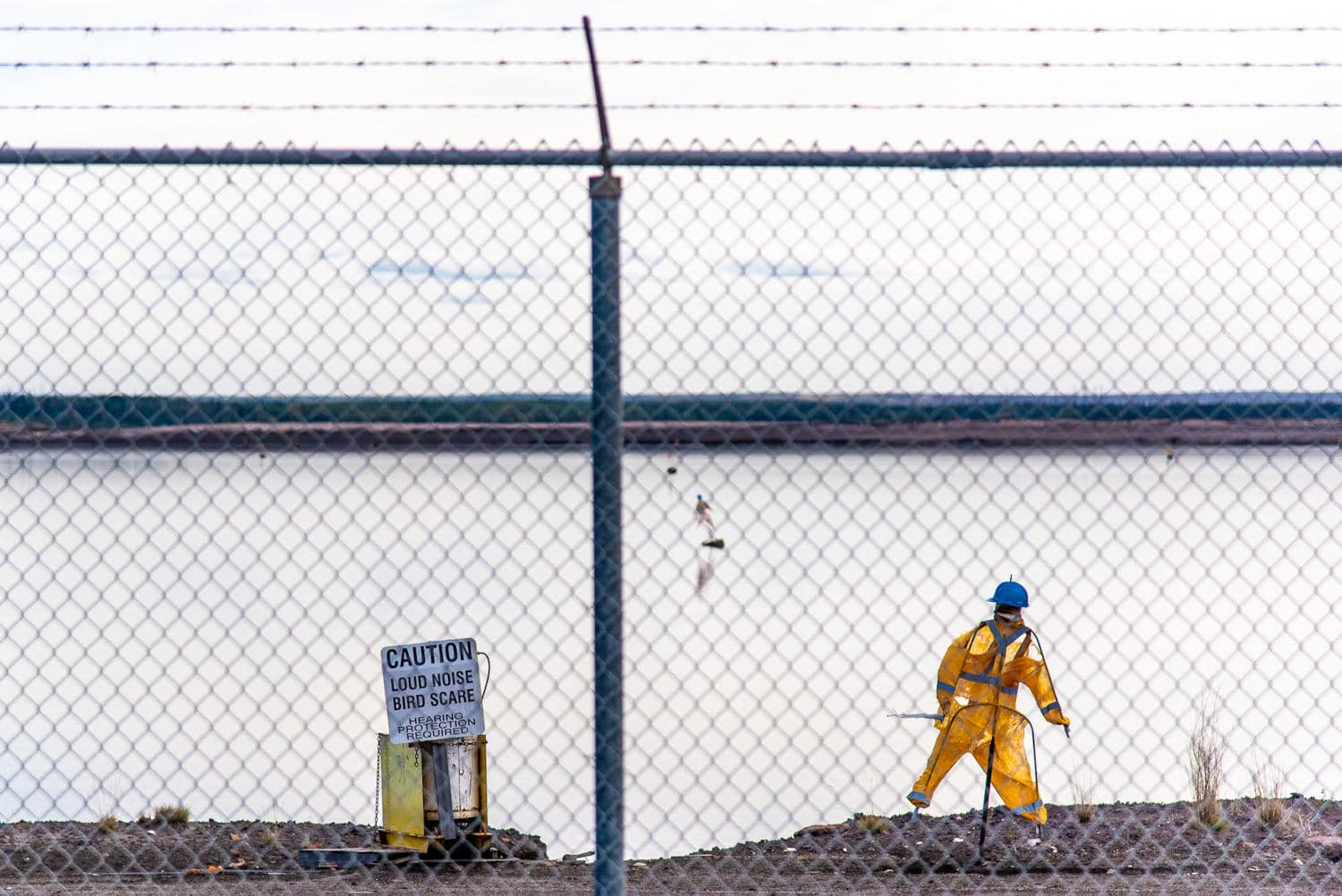
A spokesperson for Alberta Health did not reply to multiple requests for comment.
A spokeswoman for the Canadian Association of Petroleum Producers declined to comment for this article, pointing instead to reports the group has issued on its engagement with Indigenous communities and on greenhouse gas emissions.
Meanwhile, surveys of cancer cases in Fort Chipewyan carried out in 2009 and 2014 came up with mixed results. Both showed higher than normal rates of certain cancers, including biliary tract cancers. One study determined that overall cancer rates were elevated. The other did not.
The most recent case of the bile duct cancer was diagnosed in 2017, when Rigney’s nephew fell ill. Warren Simpson battled the illness for two years, but died in November 2019.
Rigney blames the oil development for her nephew’s death and all the others, even as she acknowledges that there’s nothing to prove the connection. The way she views it, Simpson was just the latest piece of her life that industrial development took from her.
“The delta was such a vibrant place,” she said. “And they took it all away, I mean all.” She added, “What else is there to take?”
The global oil industry is increasingly under assault, and Canada’s tar sands, because of the developments’ high greenhouse gas emissions, are a prime target of climate activists. Because new tar sands projects require billions of dollars invested up front, many financial analysts say the era of opening new mines is over.
But even if production from the mines holds steady or declines gradually their massive footprints are likely to expand for decades, because companies must continue to clear land to keep up production. For the people living here, it matters little whether land is destroyed by a new mine or an existing one.
When the mines do begin to decline, at some point in the future, the industry will face the challenge of what to do with the waste it has produced and how to pay for cleaning it up. The provincial government has secured $730 million from companies as collateral for a clean-up, but that would hardly even begin to cover the costs. While regulators’ official estimate of the current liability for Alberta’s mining industry is $27 billion, an internal report obtained in 2018 by Canadian journalists estimated clean-up costs of more than $100 billion. While that figure includes coal mines, they account for only a fraction of the costs.
Over the years, the people of Fort McKay have discussed moving the entire community to their reserve at Moose Lake, about 40 miles northwest, to get away from the development — Alberta’s government recently agreed to restrict, but not prohibit, deep-extraction tar sands sites within a 6-mile buffer around the lake. But for now, it seems, Fort McKay will remain where it is.
L’Hommecourt said she is torn about whether she will remain here. “My heart is in the boreal forest,” she said.
But her kids want to move away, and if they do, she might, too. The mines are coming closer to the cabin, more roads are getting blocked off.
Regulatory filings show that Imperial Oil plans eventually to reroute the creek that runs past her cabin to make way for its Kearl mine. If it did so, the land where the cabin sits would be buried by land cleared from elsewhere within the mine. A spokeswoman for Imperial, Exxon’s Canadian affiliate, declined to comment specifically on the filings, but said the company “has collaborative and unique relationship agreements with these local communities that provide mutual benefits.”
The cabin itself has been a symbol of L’Hommecourt’s resistance. It sits on an old trappers’ trail that Imperial’s workers began using about 10 years ago as an unpaved access road for exploration, marking it off with a “No Trespassing” sign. L’Hommecourt built her cabin in the middle of that road.
“I just said ‘I don’t care,’” L’Hommecourt said. “I’m gonna put my house right here and this is where it’s going to be.” When company workers come by, she said, “I just tell them, ‘turn around and go back, and if you have a problem with it, get your VP or whoever it is that you report to and then tell them to come and see me.”
So far, no one has shown up.
Nicholas Kusnetz reports for Inside Climate News.
Michael Kodas is the senior editor of Inside Climate News.
The Fifth Crime is an ongoing series, produced in collaboration with Inside Climate News and NBC, about the campaign to make “ecocide” an international crime. See other installments here.










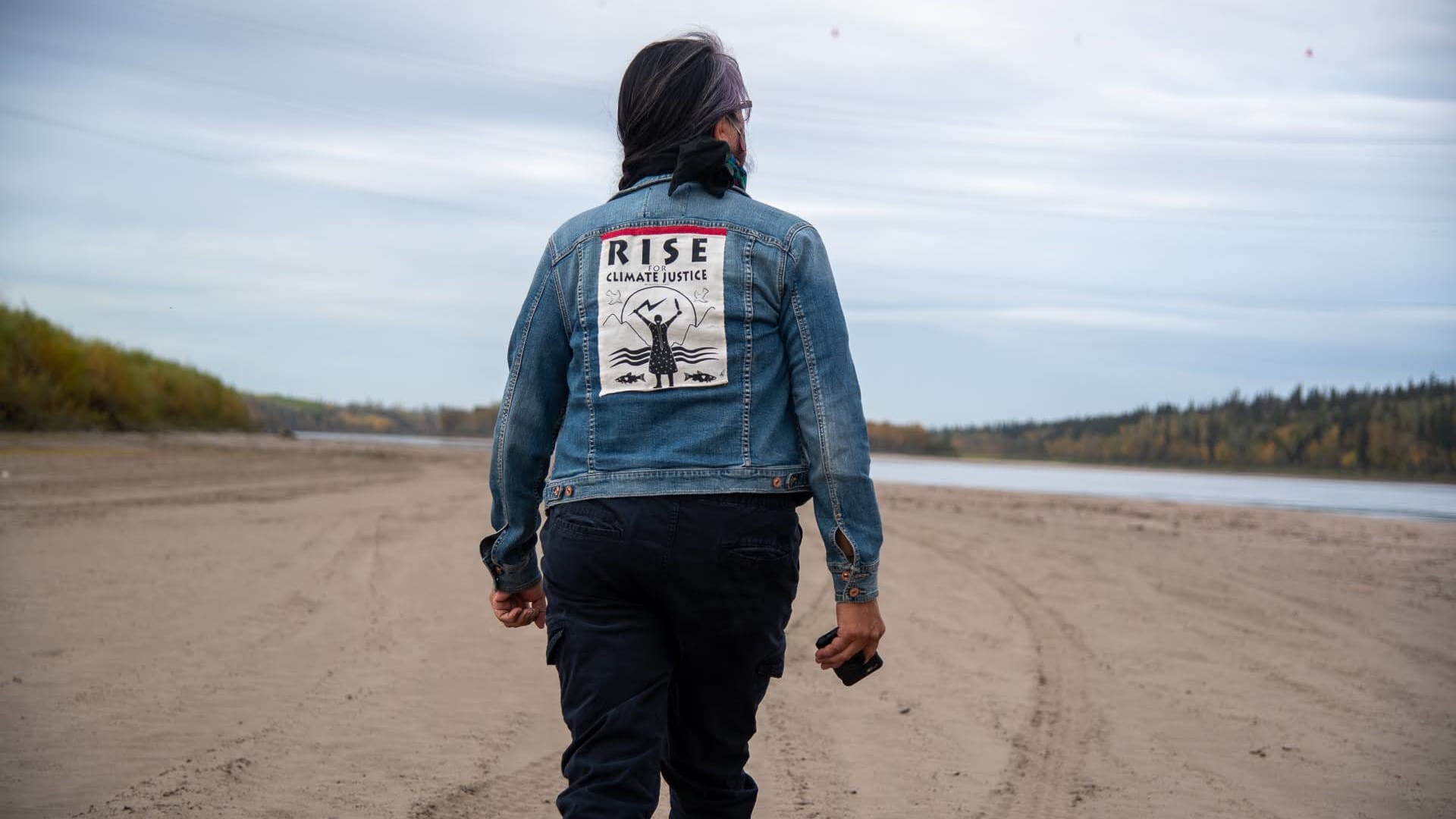
Comments are automatically closed one year after article publication. Archived comments are below.
This has got to be one of the most egregious examples of falsehood and dishonesty I have seen in a long time, and in this era of fake news, that is no small thing.
Unlike the vast majority of readers, I have actually been to Fort McMurray and Ft MacKay, many times over a span of several years. I have seen the mines, the SAG-D projects, and the reclaimed mine sites that have been returned to their previous condition. I know from first hand experience that almost every assertion in this entire article is if not an outright fabrication, then at the very best a gross misrepresentation of the actual facts. Over and over again while reading this mess, I found myself in shock and amazement, asking myself “how can they possibly write that? That is so completely dishonest!”
I was originally drawn to this series by the article on the Norilsk nickel mines, but I do not think Undark is worthy of any further exploration. After all, since I know for certain they are lying to me about Ft McMurray, it’s a fair assumption they are lying to me in everything they present. I’m not going to fall for the Gell-Mann Effect, at least in this case.
On Lance Honey, if you were anymore leveraged by big oil you’d be a big ol bar of floating tar lung.
Oil sands are simply the least efficient hydrocarbon extraction method that exists. It’s a shame this article didn’t cover this aspect more thoroughly, although it was good in talking about the personal, societal issues.
Norway has been able to create a giant fund for its people from its oil and gas industries. But Alberta’s fund is a pittance, simply because oil sands are barely profitable once all the costs are factored in.
If you factor in long-term remediation, of returning the land to a halfway usable state once the mines inevitably shut down, oil sands will never be profitable.
If they can increase their extraction, transport, and refining efficiency by another 30%, maybe, but not unless that happens.
It’s simply stealing from many future generations to make money now.
Canada needs to mandate a much larger royalty/remediation tax to raise that 100B necessary for making the land usable in the future.
And if the industry can’t be profitable enough to fund future cleanup, it shuts down.
Anyone arguing different must know they are destroying all future health and income to have income now, or they are incredibly stupid.
After reading this detailed and well-written article ( and seeing the total devastation to the tar sands which is horrifying), I agree that there should be a new ECOCIDE law for protecting the remaining fragile ecosystems we have left on our planet.
This story will appeal to the far left, the COVID story to the far right. Will be fascinating to see if a media source that is dedicated at present to following the truth no matter where it leads politically will survive in our divisive culture. Fantastic story, again, skips all the easy answers and cliches and really gives you information you would not have had otherwise.
I guess you don’t mind the money you get that comes from oil and gas..but for all the hypocrites that complain…shut your gas off ..sell your vehicles..get rid of all plastics even your bank cards…people are really and actually sick and tiered of the belly aching ….
Get down from your bully pulpit, you cruel, sanctimonious person.
I have been following this story for close to 6 years. It disgusted me that a company thinks so little of indigenous people and the United States t that they were more than willing to foul aquifers, land, animal habitats, clear cut aboreal forests that have stood for 2 thousand years, just to sell the most toxic oil on the planet to China. And the Canadian government allowed this so not to foul Canadian mountains.
Reprehensible on every conceivable level. Shame on Canada. Do me a favor. Keep your Canadian snow birds up there in the winter. They are not welcome in Florida.
What about the families who managed to pull themselves out of the abject poverty by working for these bad companies?
You last me, an credibility, at “tar sands”.
You lost me at “last” and again at “an”.